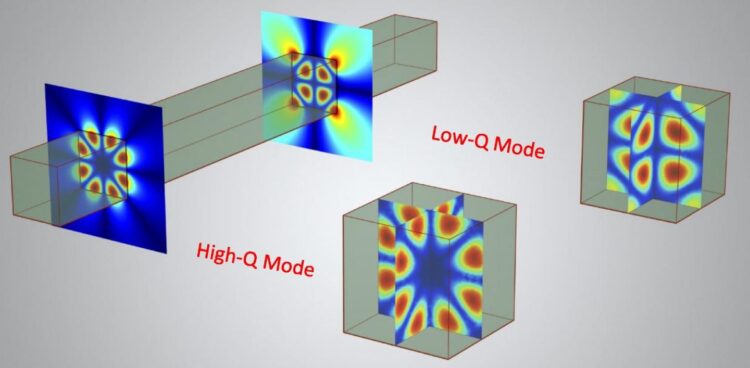Optical resonators provide the foundation of modern photonics and optics. Thanks to its extreme energy confinement, the high-Q-factor optical resonator optimizes light-matter interaction and photonic device performance by enabling low-threshold laser and enhanced nonlinear harmonic generation.
Two typical structures, the photonic crystal cavity and the whispering gallery cavity, are frequently used to obtain extremely high-Q factors. However, these structures may require dimensions that are comparable to–or several times larger than–the operating wavelength. Whether there is a general way to find out all high-Q modes in a dielectric nanocavity of arbitrary shape has been a fundamental question.
A research team from University of New South Wales Canberra, The Australian National University, and Nottingham Trent University recently developed a robust recipe for finding high-Q modes in a single dielectric nanocavity, as reported in Advanced Photonics.
Subwavelength high-index dielectric nanostructure
Subwavelength high-index dielectric nanostructures are a promising platform for realizing CMOS-compatible nanophotonics. These nanostructures are based on two main factors: support of electric and magnetic Mie-type resonances and reduced dissipation. A single dielectric nanoresonator (e.g., a disk with finite thickness) supports the high-Q mode (also known as the quasi-bound state in the continuum). By exploring the quasi-bound state in the continuum, Huang et al. found a way to easily find many high-Q modes, using Mie mode engineering to cause a hybridization of paired leaky modes, resulting in avoided crossing of high- and low-Q modes.
Robust, pair-wise approach
Interestingly, both the avoided crossing, and crossing of eigenfrequencies for the paired modes, led to the discovery of high-Q modes, representing a simple yet robust way of finding high-Q modes. The team experimentally confirmed high-Q modes in a single silicon rectangular nanowire. The measured Q-factor was as high as 380 and 294 for TE(3,5) and TM(3,5), respectively (see figure). The authors attribute the resultant high Q-factors to the suppression of radiation in the limited leaky channels or minimized radiation in momentum space.
According to senior author Andrey E. Miroshnichenko of the School of Engineering and Information Technology at University of New South Wales, “This work presents a straightforward method of finding out high-Q modes in a single dielectric nanocavity, which may find applications in integrated photonic circuits, such as ultra-low-threshold laser for on-chip light sources, strong coupling for polariton lasing, and enhanced second or third harmonic generations for night vision.”
###
Read the open access research article: Lujun Huang, Lei Xu, Mohsen Rahmani, Dragomir N. Neshev, and Andrey E. Miroshnichenko, “Pushing the limit of high-Q mode of a single dielectric nanocavity,” Adv. Photon. 3(1), 016004 (2021), doi 10.1117/1.AP.3.1.016004

























